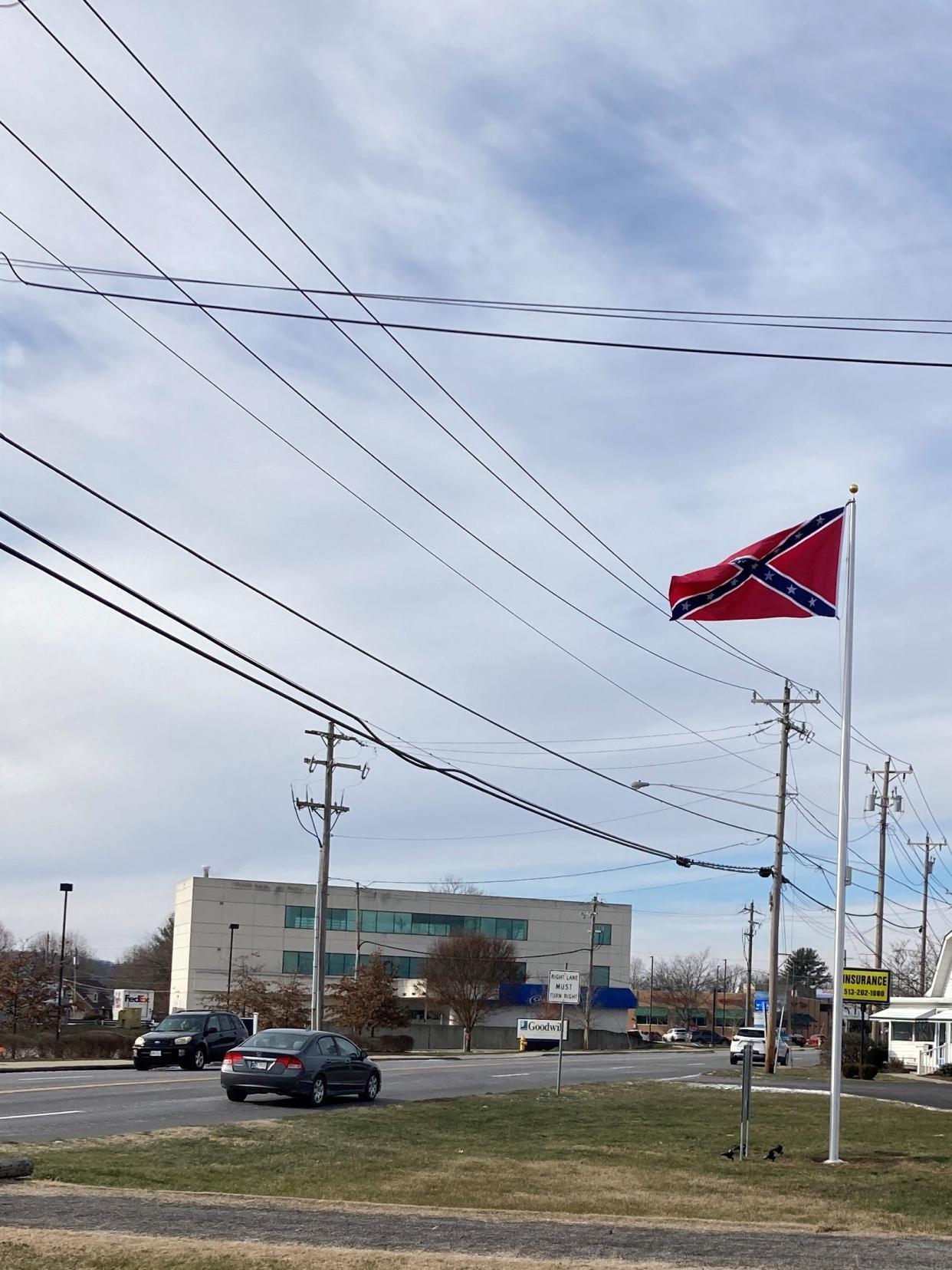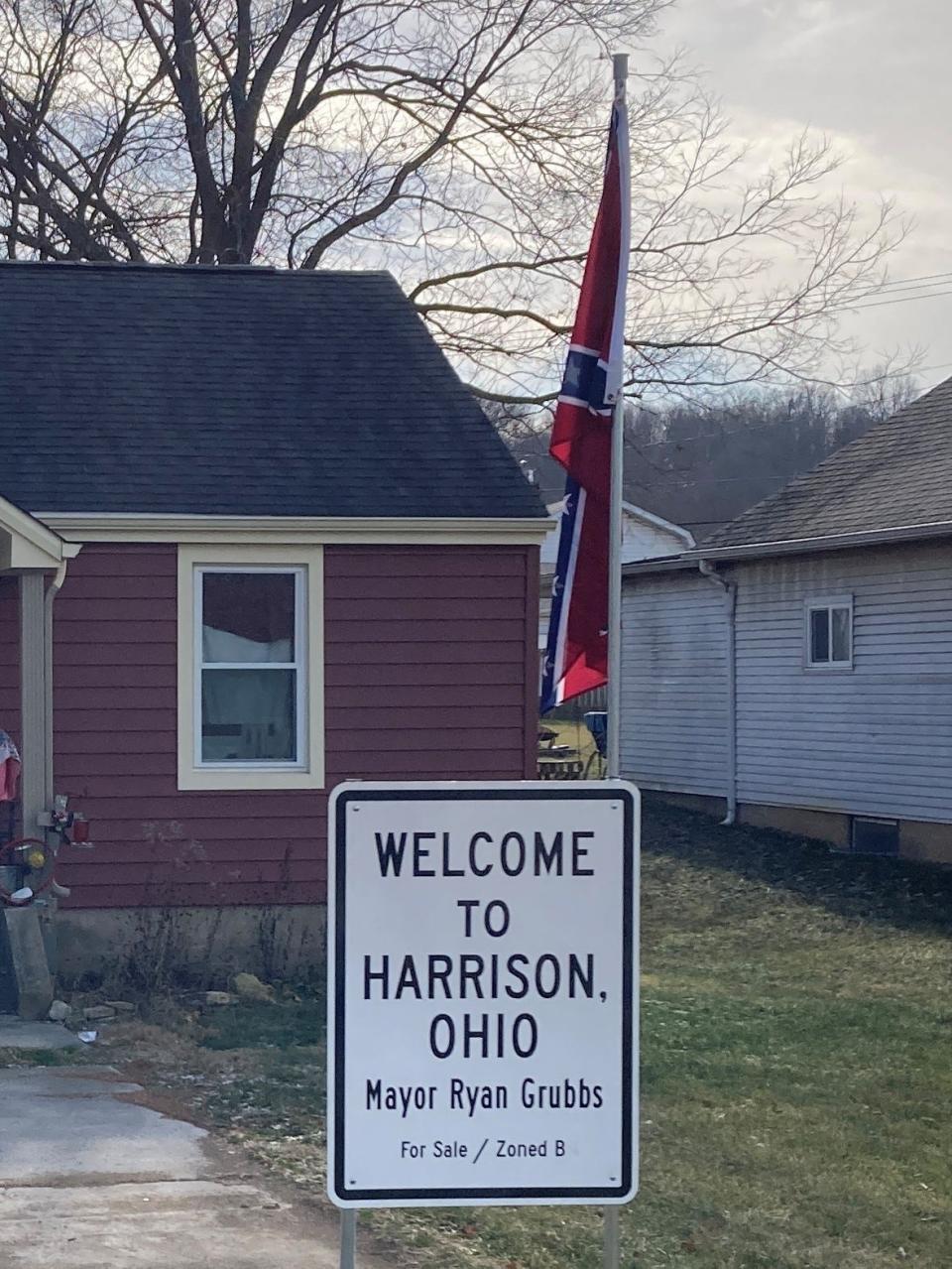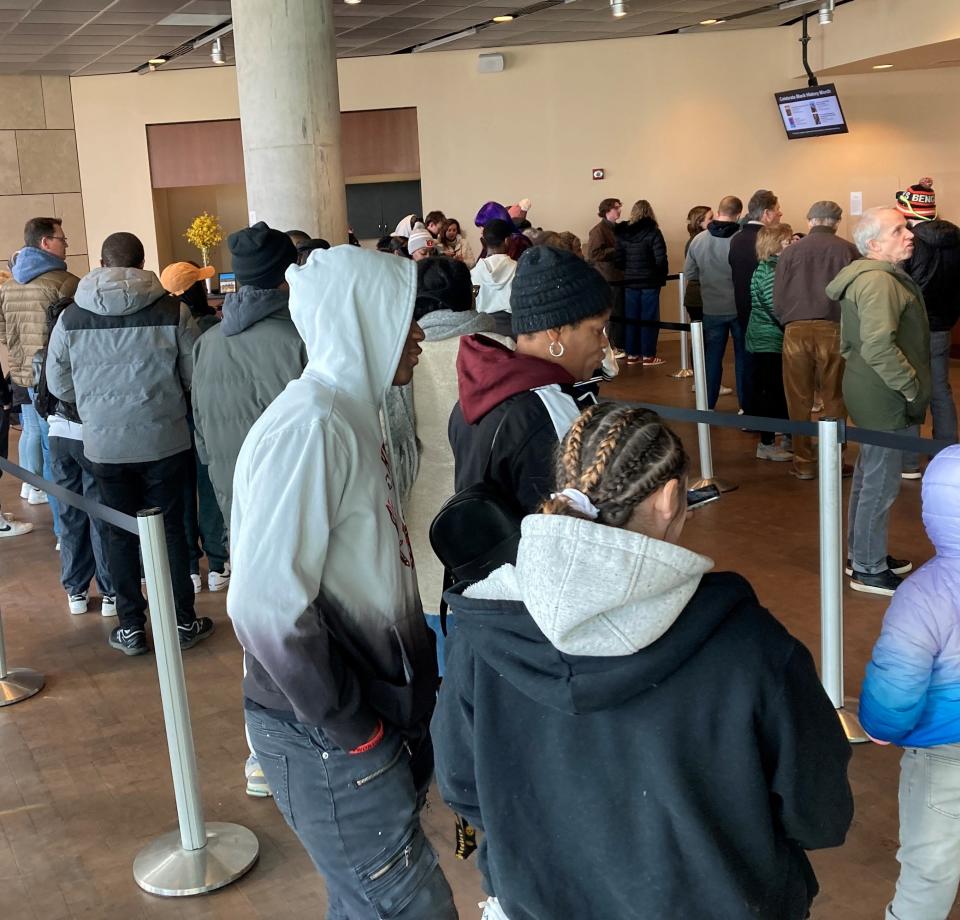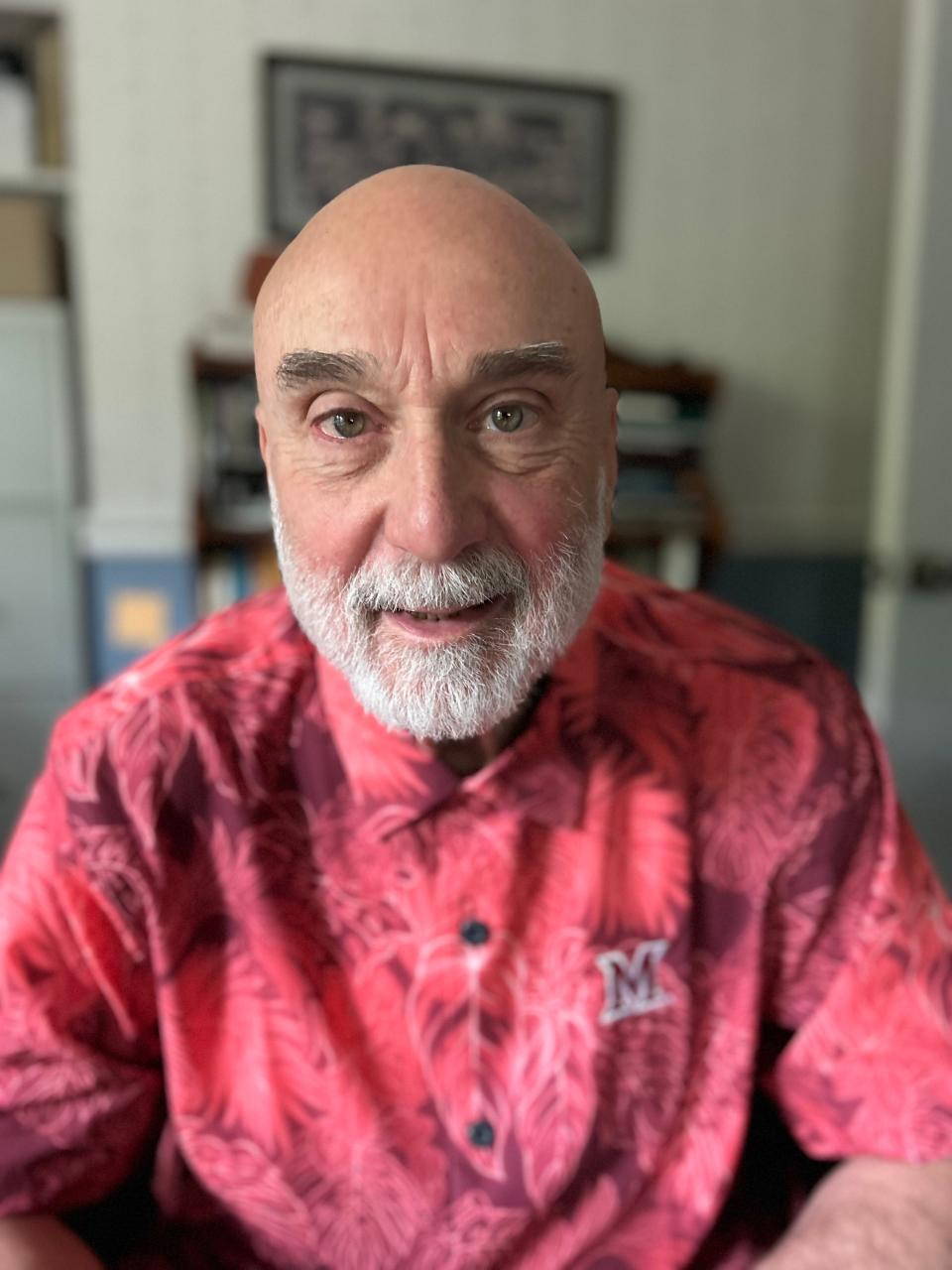Confederate flags in Ohio! Why would they be here? | Opinion

- Oops!Something went wrong.Please try again later.
- Oops!Something went wrong.Please try again later.
I had to see what was causing the ruckus for myself.
So I drove over to Harrison, some 25 miles west near the Indiana state line. And there, along a major busy road, stood a tall flagpole with a Confederate banner flapping in the breeze.
It made me think of Aunt Pittypat’s exclamation in the Civil War-set epic “Gone With The Wind:” “Yankees in Georgia! How did they ever get in?”
But in this case, it’s: “Confederates in Ohio! Why would they be here?”
Having lived several years in Georgia while covering the South, I’m very familiar with the “Heritage Not Hate” arguments for waving the flag and honoring those who fought for their home states. I got to know some Sons of Confederate Veterans who were active battle reenactors with no political agendas.
But Ohio’s heritage is Union. The state contributed more than 300,000 troops to the Civil War, including the leading generals: Ulysses S. Grant, a Clermont County native, and William T. Sherman, from Lancaster in south-central Ohio.
The Ohio History Connection says more than 35,000 Ohioans died in that war.
And whether Republican presidential candidate Nikki Haley can readily say it, which she had trouble doing on the campaign trail a few weeks ago, that war was about slavery − not just over freedoms about “how government was going to run” as Haley said, but over freedom for all Americans.

A Confederate flag is a reminder of when Americans held people in captivity as property and of the 1960s effort to preserve racial segregation in opposition to the civil rights movement in the South.
Haley herself as governor successfully called for removal of the flag from South Carolina’s Capitol grounds − following a racist mass shooting in a historically Black church in Charleston.
A 2020 Quinnipiac poll found 56% of those surveyed associated the Confederate flag with racism. That total included 55% of southerners surveyed, and 90% of Black people.
The flag’s symbolism came up in a Hamilton County courtroom in the 2017 trial of Ray Tensing, a white University of Cincinnati police officer who fatally shot Sam DuBose, an unarmed Black man, after a traffic stop. Tensing’s attorney asked that jurors not see a T-shirt depicting the Confederate flag that Tensing had worn as an undershirt that day, calling it “highly inflammatory.”
Judge Leslie Ghiz agreed to exclude it as “prejudicial.” The trial ended with a deadlocked jury.
The motives of the Harrison property owner who put the flags up aren’t clear. There hasn’t been a public comment and there was no response when I did some door-knocking. There’s another Confederate flag, on a shorter pole, at the other end of the property. Both poles also have nearby signs that state “Welcome to Harrison, Ohio” and “Mayor Ryan Grubbs.”
Passers-by could infer that to mean the flags are part of an official city welcome, much to the chagrin of Grubbs. He took office in early January, a few days after the flags’ appearance triggered a backlash against them in the city of nearly 14,000 people, the vast majority of them white.
“A large percentage of the population is frustrated,” Grubbs said by phone. “But we have to be careful to respect free speech rights.”
The city consulted with legal counsel, who concluded that the flags and signs were in compliance with current zoning law. However, Grubbs said he plans to ask city council to see if there is an ordinance to be passed to prevent public displays from “crossing the line (into) hate speech.”
“The city does not condone this message,” he said. “This is not the Harrison community. This is not the people who live here. It sure as hell doesn’t represent me.”

My visit to Harrison came on Martin Luther King Jr. Day, so a natural next stop was the National Underground Freedom Center in downtown Cincinnati. The center is dedicated to educating about and inspiring freedom and social justice and takes its name from the Civil War-era network in which “conductors” helped slaves reach freedom north of the Ohio River.
On this day, the center offered free admission, and visitors were waiting in line 20 to 30 minutes to tour the exhibits.
That’s the kind of heritage that people in the Cincinnati area should properly take pride in.
EXTRA POINTS
Focusing on side issues in Ohio’s Statehouse
Based on what some of Ohio’s elected leaders and legislators have been talking about so far this year, here are keys to protecting Ohio children:
Don’t let transgender students go into school bathrooms that don’t correspond with their gender at birth.
Don’t let transgender girls compete in girls’ sports.
Make sure Ohioans are at least 18 years old to access online pornography.
Take action to ban or restrict Delta-8 THC hemp products to keep them from minors.
What they’re not talking about are taking steps that would protect many more Ohio children than any of those measures. More than 100 Ohio children die from gun violence every year and studies have found that adolescent suicide rates are significantly higher when there are guns in the home.
Some common-sense legislation such as mandating secure weapons storage and quick reporting of stolen or lost firearms could do more to protect children than the issues currently being promoted in Columbus. But it’s easier to take on trans kids than the gun lobby.
New regional role for Liz Keating

It didn’t take long for Liz Keating to re-enter community involvement.
Less than a month after her three-year stint on Cincinnati City Council ended, she will become the vice president of government affairs and advocacy for the Cincinnati USA Regional Chamber. In that role, she said, she’ll seek to build coalitions and promote Cincinnati regional growth.
Keating’s November election defeat leaves the city council without a Republican member. She had promoted gun safe storage legislation, by the way.
At age 40, she hasn’t ruled out seeking another elective office at some point, but now her focus will be on helping the city and region in her chamber role.
How Mr. Romano “indoctrinated” me

Retired Miami University professor Tom Romano drew a lot of comments with his Jan. 11 guest column, titled: “Trump’s insufferable traits remind me of my immature teenage self.”
When a conservative reader I correspond with objected to Romano’s anti-Trump prose, I told him "Mr. Romano" had been my literature teacher in high school. The reader asked if Mr. Romano indoctrinated me into liberal philosophy.
Hardly. His class wasn’t political.
He "indoctrinated" me with his teaching skill and enthusiasm into admiration and appreciation for the works of T.S. Eliot, Thornton Wilder, Sinclair Lewis and more great writers. Not only me. At our Edgewood High School reunion last fall, several of us remembered him as a favorite teacher.
Sewell is a regular Opinion contributor. Contact him at his personal email: dsewellrojos@gmail.com
This article originally appeared on Cincinnati Enquirer: Confederate flag causes flap in Cincinnati suburb

